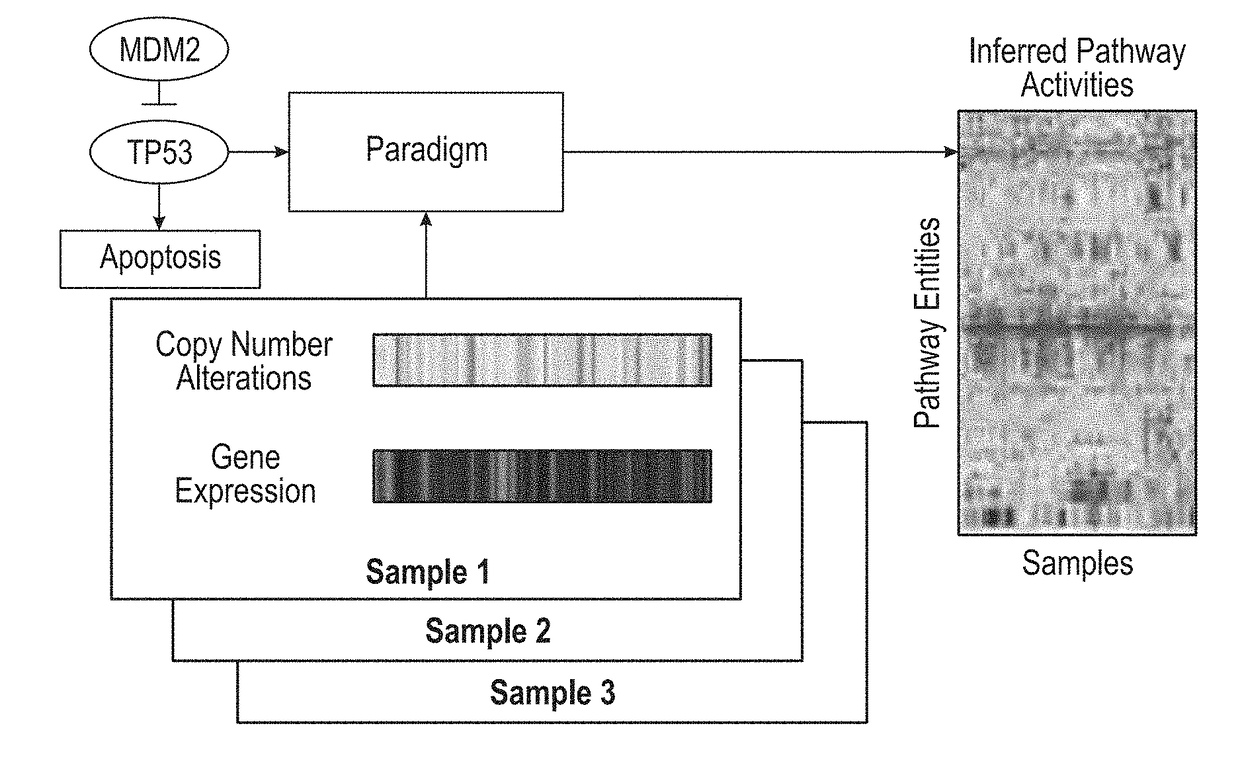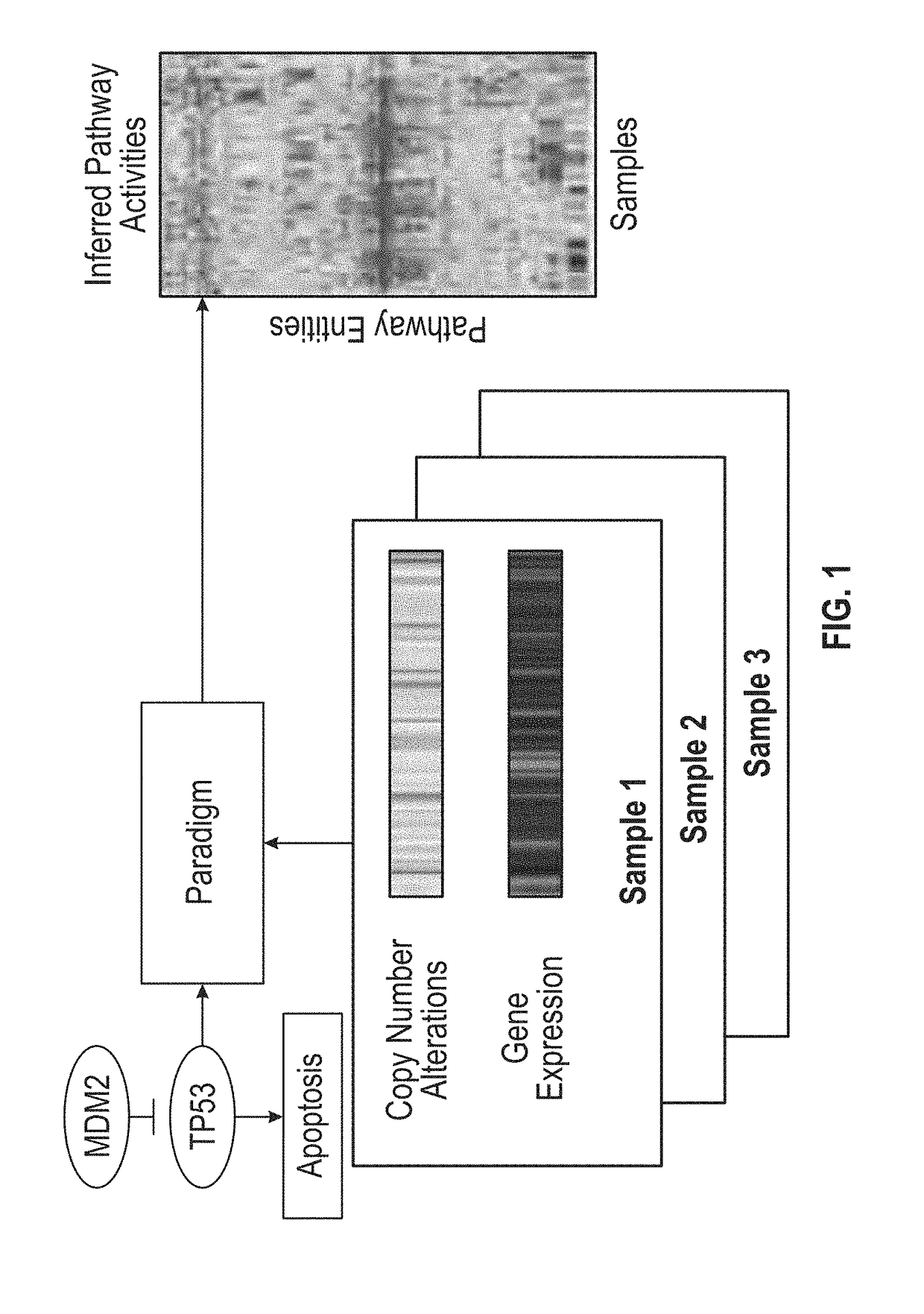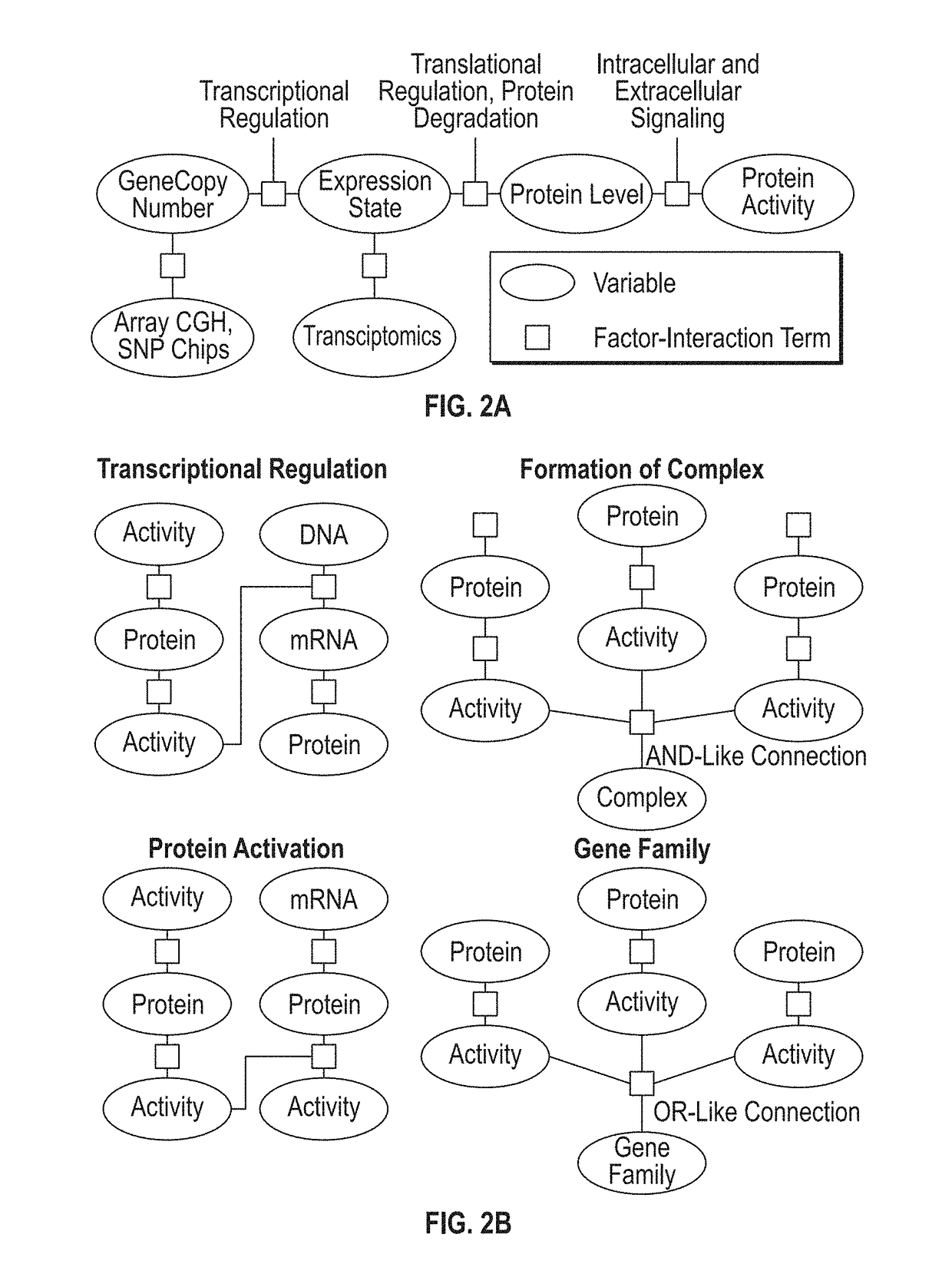Pathway recognition algorithm using data integration on genomic models (paradigm)
a path recognition algorithm and genomic model technology, applied in the field of path recognition algorithms using data integration on genomic models, can solve the problems of inability to translate modern advances in basic cancer biology, failure to apply knowledge in practice, and a lack of success based on this paradigm
- Summary
- Abstract
- Description
- Claims
- Application Information
AI Technical Summary
Benefits of technology
Problems solved by technology
Method used
Image
Examples
example i
ces
[0142]Breast cancer copy number data from Chin (2007 supra) was obtained from NCBI Gene Expression Omnibus (GEO) under accessions GPL5737 with associated array platform annotation from GSE8757.
[0143]Probe annotations were converted to BED 15 format for display in the UCSC Cancer Genomics Browser (Zhu:2009, supra) and subsequent analysis. Array data were mapped to probe annotations via probe ID. Matched expression data from Naderi (2007, supra) was obtained from MIAM1Express at EBI using accession number E-UCon-1. Platform annotation information for Human 1A (V2) was obtained from the Agilent website. Expression data was probe-level median-normalized and mapped via probe ID to HUGO gene names.
[0144]All data was non-parametrically normalized using a ranking procedure including all sample-probe values and each gene-sample pair was given a signed p-value based on the rank. A maximal p-value of 0.05 was used to determine gene-samples pairs that were significantly altered.
[0145]The gli...
example ii
mpendium
[0146]We collected the set of curated pathways available from the National Cancer Institute Pathway Interaction Database (NCI PID) (Schaefer:2009 supra). Each pathway represents a set of interactions logically grouped together around high-level biomolecular processes describing intrinsic and extrinsic sub-cellular-, cellular-, tissue-, or organism-level events and phenotypes. BioPAX level 2 formatted pathways were downloaded. All entities and interactions were extracted with SPARQL queries using the Rasqal RDF engine.
[0147]We extracted five different types of biological entities (entities) including three physical entities (protein-coding genes, small molecules, and complexes), gene families, and abstract processes. A gene family was created whenever the cross-reference for a BioPAX protein listed proteins from distinct genes. Gene families represent collections of genes in which any single gene is sufficient to perform a specific function. For example, homologs with redunda...
example iii
Predicting Biological Pathways
[0150]We first converted each NCI pathway into a distinct probabilistic model. A toy example of a small fragment of the p53 apoptosis pathway is shown in FIG. 2. A pathway diagram from NCI was converted into a factor graph that includes both hidden and observed states. The factor graph integrates observations on gene- and biological process-related state information with a structure describing known interactions among the entities.
[0151]To represent a biological pathway with a factor graph, we use variables to describe the states of entities in a cell, such as a particular mRNA or complex, and use factors to represent the interactions and information flow between these entities. These variables represent the \textit{differential state of each entity in comparison to a “control” or normal level rather than the direct concentrations of the molecular entities. This representation allows us to model many high-throughput datasets, such as gene expression det...
PUM
 Login to View More
Login to View More Abstract
Description
Claims
Application Information
 Login to View More
Login to View More - R&D
- Intellectual Property
- Life Sciences
- Materials
- Tech Scout
- Unparalleled Data Quality
- Higher Quality Content
- 60% Fewer Hallucinations
Browse by: Latest US Patents, China's latest patents, Technical Efficacy Thesaurus, Application Domain, Technology Topic, Popular Technical Reports.
© 2025 PatSnap. All rights reserved.Legal|Privacy policy|Modern Slavery Act Transparency Statement|Sitemap|About US| Contact US: help@patsnap.com



